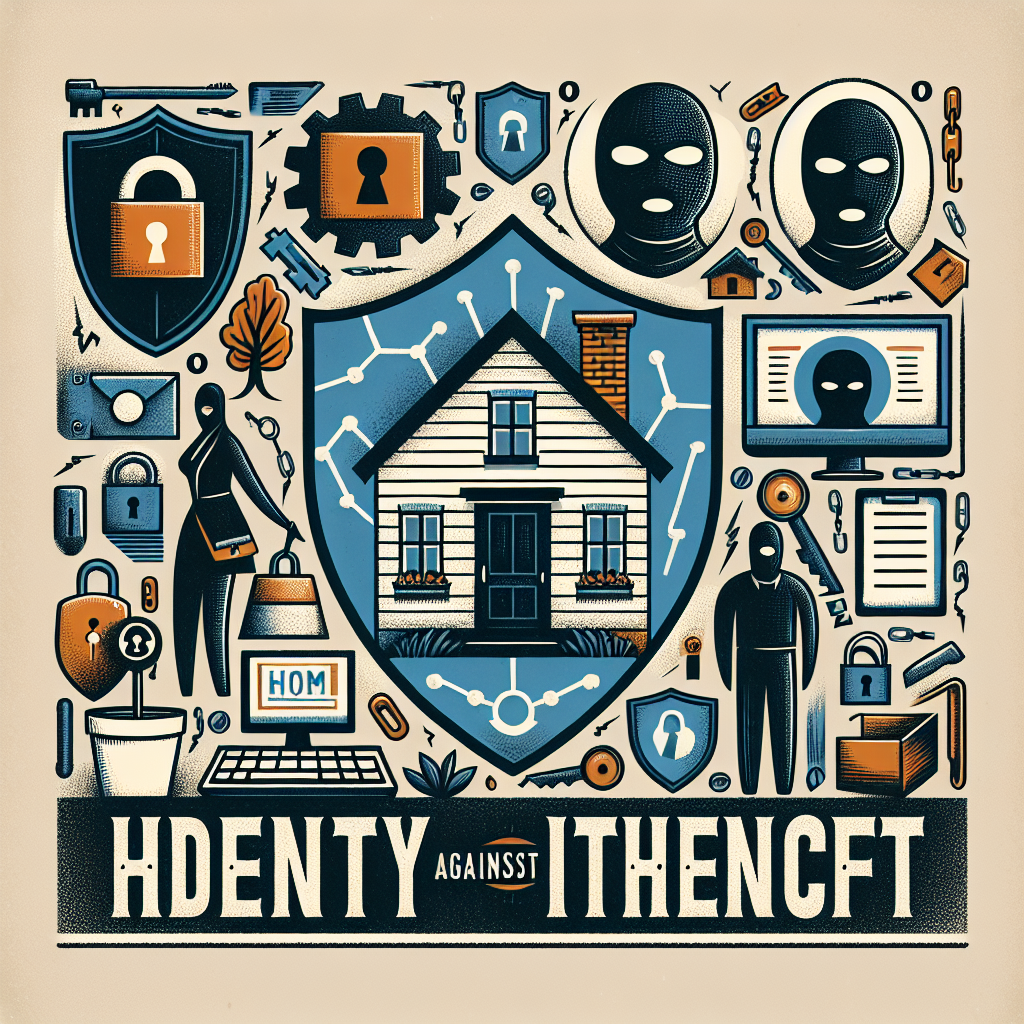Filed under Home Insurance on
Identity Theft Coverage in Home Insurance Explained

Identity theft does not just drain bank accounts; it can swallow your time, well-being, and confidence. When fraud invades your life, it is not unusual to spend weeks unraveling errors, filing disputes, and monitoring accounts. The relief for many homeowners is that their insurance policy can include protection to help with the aftermath. This guide delivers Identity Theft Coverage in Home Insurance Explained with practical detail, so you can decide if the benefit is right for your household and how to use it effectively.
Identity Theft Coverage in Home Insurance Explained: What It Is
Identity theft coverage is typically an optional add-on, or endorsement, to a homeowners, condo, or renters policy. It helps pay for certain costs associated with restoring your identity and repairing damage to your personal records after fraud. Unlike fraud protection on credit cards, which may forgive unauthorized charges, identity theft coverage focuses on the recovery process: fixing your credit, correcting records, and coordinating the cleanup.
Most insurers market this benefit as a low-cost endorsement that layers support services on top of reimbursement. The goal is to reduce the time, confusion, and personal expense that often follow an incident. Increasingly, carriers pair this coverage with credit monitoring, dark web surveillance alerts, or access to 24/7 fraud specialists—tools that can help detect suspicious activity earlier and guide you through the recovery process.
When people search for Identity Theft Coverage in Home Insurance Explained, they often really want to know the practical truth: what costs does it pay for, what are the limits, and how much help will I actually get if something goes wrong? Let’s break down the details in plain terms.
What Identity Theft Coverage Usually Pays For
The exact terms vary by insurer, but common reimbursable expenses include the following categories:
Lost wages due to time off work for notarizing documents, meeting with the police, disputing fraudulent accounts, or attending court proceedings.
Attorney fees to help manage complex disputes, civil suits, or to navigate issues if your identity theft leads to wrongful criminal records or tax complications.
Costs for reissuing documents such as passports, driver’s licenses, or records changed due to fraud.
Mailing, notarizing, and long-distance call charges tied to correcting your identity records.
Fees for credit reports and for placing security freezes or fraud alerts with the credit bureaus.
Professional services such as identity restoration case management or access to a fraud specialist who coordinates repairs with agencies, lenders, and collectors.
Some carriers also reimburse for a portion of fraudulent withdrawals from eligible accounts, though this is less common because financial institutions often already cover unauthorized transactions. Always review your policy language to avoid assuming that all direct losses will be reimbursed.
What Identity Theft Coverage Typically Does Not Cover
While generous in its support services, identity theft endorsements are not blank checks. Common exclusions include the following:
Direct cash losses if a bank or card issuer already reimburses you under federal law or their fraud policies. Insurers usually do not duplicate coverage that another party provides.
Losses stemming from business-related identity theft, such as a fraudster using your company’s tax ID, unless your policy specifically includes business coverage.
Pre-existing incidents that began before you purchased the endorsement or before the waiting period elapsed.
Losses caused by family members or friends living in your household, sometimes described as “friendly fraud,” depending on policy language.
Any expenses beyond the stated coverage limit or outside reimbursable categories noted in the endorsement.
Why Identity Theft Coverage Matters Now
Digital life has increased exposure points: mobile banking, online shopping, peer-to-peer payments, and countless databases holding your personal information. Federal regulators routinely report millions of identity theft and fraud complaints every year. Independent research firms continue to estimate aggregate annual losses in the tens of billions of dollars. While those figures fluctuate year to year, the long-term trend remains clear—identity fraud is persistent, opportunistic, and quick to exploit new channels.
Beyond the financial impact, recovery is labor-intensive. Victims may spend dozens of hours correcting credit reports, untangling tax or medical records, and confirming their identity with banks, government agencies, and lenders. The national conversation around identity protection has shifted from “Will it happen?” to “If it happens, how fast can I recover?” Identity theft coverage speaks directly to that second question by pairing reimbursement with expert help.
How the Endorsement Works Within Your Policy
Most insurers offer identity theft coverage as an endorsement with a set annual premium and a defined limit, often ranging from $10,000 to $50,000 for reimbursable expenses. Many carriers waive deductibles on identity restoration benefits, but some apply a small deductible. The endorsement usually extends to all family members who reside in your household, and sometimes to dependent students temporarily living away at school. Check your declarations page and endorsement wording to confirm who is protected.
The benefit activates when you experience a covered identity theft event—such as a fraudulent account in your name, misuse of your Social Security number, or an IRS notice about a tax return you did not file. Once notified, your insurer typically assigns a fraud specialist who helps create an action plan and organizes documentation you will need to validate expenses.
How Identity Theft Coverage in Home Insurance Explained Fits Your Risk Profile
If you have multiple online accounts, travel frequently, manage finances digitally, or have personal information in many places due to home buying, healthcare, or student loans, your exposure is naturally higher. In those cases, a low-cost endorsement can punch above its weight by saving time. Even cautious consumers can be affected by data breaches outside their control, so this coverage is not just for the heavy user of technology; it is a safety net for anyone whose information exists in the modern economy.
What to Look For in Policy Language
Not all endorsements are created equal. Key details to compare include the following:
Coverage limit and sublimits. Is there one overall limit with smaller caps for certain costs, like legal fees or lost wages? Higher sublimits for legal help can be valuable in complex cases.
Deductible. Many policies have no deductible for identity restoration, but it is not universal. A no-deductible structure can simplify filing small but necessary claims, like notarization and mailing costs.
Scope of services. Some endorsements include proactive monitoring (credit, dark web, address change alerts). Others focus on post-incident restoration only. Proactive services are often worth a modest increase in annual premium.
Household member definition. Confirm that spouses, domestic partners, and dependent children are explicitly included, as well as students away at school.
Business use and gig work. If you run a home-based business or freelance, check whether work-related identity issues are excluded and decide if a separate business solution is needed.
Endorsement Versus Standalone Identity Protection Plans
Standalone identity protection plans—offered by banks, credit bureaus, and risk management companies—often emphasize ongoing monitoring, alerts, and identity theft insurance for covered expenses. A homeowners endorsement, in contrast, is built around the insurance relationship you already have, sometimes at a lower annual cost, and often includes concierge-style restoration support. There is no single right answer; some people pair both types for redundancy.
When evaluating the two, weigh the value of monitoring and alerts you will actually use against the convenience and claims familiarity of your existing insurer. For many households, treating Identity Theft Coverage in Home Insurance Explained as a recovery benefit and supplementing with free or low-cost credit monitoring tools provides a solid balance.
Real-World Scenarios
New credit accounts in your name. You find a hard inquiry or a new account on your credit report you did not authorize. The endorsement can help you dispute the account, file police or FTC reports if needed, and recover related costs.
Tax identity theft. You receive notice that a tax return was filed in your name. An identity restoration specialist can coordinate with the IRS, gather supporting documentation, and advise on next steps while your insurer reimburses eligible expenses.
Medical identity theft. Bills appear for treatments you never received. Your coverage may help you work with providers and insurers to purge fraudulent records and restore your medical history.
Criminal identity theft. You learn that someone used your name during an arrest. Attorney fees to correct records may be reimbursable, and case management becomes invaluable to untangle legal paperwork quickly.
Costs, Limits, and Value
Premiums for an identity theft endorsement are typically modest compared to the broader homeowners policy. Many fall in the range of a few dollars per month to a small annual fee, depending on carrier, limit, and included services. The value lies not just in reimbursement, but in guided restoration that can compress recovery time and help you avoid expensive missteps.
Think of Identity Theft Coverage in Home Insurance Explained as a way to convert chaotic, open-ended recovery into a structured process. The endorsement won’t prevent every incident, but it can shrink the clean-up timeline and out-of-pocket costs when the unexpected happens.
How to File a Claim and Speed Up Recovery
Act quickly once you detect suspicious activity. Early action helps limit damage and strengthens your documentation. Here is a straightforward sequence to follow:
Contact your insurer’s claims line and ask for the identity theft restoration team. Explain what you discovered and how.
Place a fraud alert or security freeze with the credit bureaus and request copies of your reports. Save confirmation receipts for reimbursement.
File an identity theft report with the appropriate authorities (for example, through the FTC in the United States) and obtain your reference number or affidavit.
Notify affected financial institutions. Close or flag compromised accounts and request written confirmations.
Track every expense, call, and letter. Keep a simple log with dates, contacts, and outcomes. Your claims handler will love you for this, and it speeds reimbursement.
Submit documentation to your insurer as you go. Do not wait for a single, massive packet; frequent, smaller submissions often resolve faster.
Claim Documentation Tips
Retain originals of receipts and send copies to your insurer unless instructed otherwise. Organize by category: legal fees, mailing costs, credit reports, travel, lost wages, and miscellaneous.
Ask for a written recovery plan from the restoration specialist. This becomes a roadmap for both you and the carrier, reducing confusion and duplicated efforts.
Confirm any policy limits in writing so you can prioritize high-impact steps if sublimits might be reached.
Prevention Strategies That Strengthen Your Position
No prevention tactic is perfect, but layering defenses reduces the odds and severity of fraud. You can align your personal security with the strengths of your policy:
Enable multifactor authentication everywhere you can. App-based authenticators or hardware keys are stronger than SMS codes.
Use unique, strong passwords, and a reputable password manager to reduce reuse and phishing risk.
Freeze your credit with all major bureaus and temporarily lift the freeze only when needed. This simple step blocks many new-account fraud attempts.
Review credit reports quarterly and bank statements weekly. Early detection shortens the damage window and simplifies restoration.
Be cautious with public Wi-Fi, QR codes, and unsolicited messages requesting personal data. When in doubt, verify through a trusted channel.
Consider monitored mail services or USPS Informed Delivery to spot unexpected changes of address.
Expert and Industry Perspectives
Consumer protection agencies emphasize early detection and documentation. Industry analysts note that the most effective identity theft benefits blend reimbursement with expert human help. Identity fraud is not just a technical problem; it is a paperwork and process challenge. That is why insurers increasingly invest in restoration teams that understand the inner workings of credit bureaus, government systems, and financial institutions.
Regulators and state insurance departments also encourage consumers to compare coverage details carefully. Limits, sublimits, and the presence of professional restoration services often matter more than the headline dollar amount. A lower limit paired with robust concierge support may outperform a higher limit that leaves you to navigate the process alone.
Common Myths, Clarified
Myth: My bank protects me, so I do not need identity theft coverage. Reality: Banks address unauthorized transactions; they do not fix every downstream record error or cover your time and legal fees.
Myth: Monitoring alone will solve the problem. Reality: Monitoring alerts you; it does not restore your identity. Having restoration help in place matters when time is critical.
Myth: This only happens to careless people. Reality: Large-scale data breaches expose cautious and careless consumers alike. Even paper-only households have data stored by healthcare providers, schools, and agencies.
Who Benefits Most from This Coverage
Families with teens and college students who open new financial accounts or move frequently.
Remote workers and frequent travelers who rely on digital platforms and mobile payments.
Caregivers who manage finances for elderly relatives, where fraud risks and administrative burdens are high.
Homeowners with complex financial lives—multiple cards, loans, or small-business activities—who want a streamlined path to restoration.
In each case, the pattern is similar: Identity Theft Coverage in Home Insurance Explained offers a defined plan, access to experts, and reimbursement that together reduce the stress and hours spent fixing problems alone.
How to Compare Offers from Different Insurers
Start with your current carrier to see what is available and at what price. Request the endorsement form and read the defined terms, covered expenses, limits, and exclusions. Then, check at least two competitors. Keep a short checklist:
Are credit monitoring and alerts included, optional, or not offered?
Is there a dedicated restoration team with 24/7 availability?
What is the overall limit and what sublimits apply to legal fees and lost wages?
Is there a deductible for restoration expenses?
Who in the household is covered, including dependents away at school?
Do they provide proactive tools like dark web monitoring, social media account takeover support, or address change monitoring?
Cost-Benefit Quick Take
Because premiums are relatively low, the threshold for value is not high. A single incident can generate dozens of mailings, a handful of notarizations, paid credit reports, and hours of lost work—well beyond the cost of the endorsement. When a case grows more complex, attorney guidance and a knowledgeable restoration specialist become decisive.
There is no guarantee you will need it, but insurance is about smoothing financial volatility. If the endorsement costs less than one hour of your professional time each month, it is often an easy yes.
Frequently Asked Questions
Does identity theft coverage improve my credit score? No. It helps correct inaccuracies that might be depressing your score, but the policy does not directly change your credit. The value lies in fixing errors and preventing new ones from appearing.
Will it reimburse me for fraudulent charges? Sometimes, but do not rely on it. Most financial institutions cover unauthorized transactions, and insurance focuses on the cleanup. Read your endorsement for any limited reimbursement terms.
Can renters and condo owners get this coverage? Yes. Many renters and condo policies offer identical or similar endorsements. The process and benefits mirror homeowners policies.
Does filing an identity theft claim raise my home insurance premium? Insurers handle rating differently. A single restoration claim with modest reimbursement often has little impact compared to claims for property losses, but underwriting practices vary. Ask your agent how your carrier treats identity theft claims.
Is it still worth it if I already have a standalone monitoring service? Possibly. Monitoring and restoration serve different roles. Pairing them can shorten detection and recovery time. For many, the endorsement is a cost-effective complement to existing tools.
Is coverage valid if the theft began months ago? It depends on when you discovered the issue and the policy’s effective dates and waiting periods. Report suspected theft as soon as you can and let your insurer determine eligibility.
What if the thief is a family member? Some policies exclude fraud by household members. Others consider it if the responsible party is not an insured. Check your endorsement and ask for clarification before a claim arises.
A Simple Action Plan
Review your current homeowners, condo, or renters policy to see if an identity theft endorsement is available. Ask for the endorsement form and a quick premium quote.
Compare at least two options, noting limits, sublimits, deductibles, and included services. Choose the one that emphasizes restoration support.
Place credit freezes, turn on multifactor authentication, and adopt a password manager. Prevention plus coverage is stronger than either alone.
Document and save everything if you suspect fraud. Fast, well-organized claims tend to resolve more smoothly and fully.
The Bottom Line
Identity theft is a modern hazard that blends financial risk with administrative headaches. You cannot eliminate the threat entirely, but you can make recovery far easier. Use this guide—Identity Theft Coverage in Home Insurance Explained—to understand how an endorsement works, what it pays for, and what it does not. When you compare policies thoughtfully and combine them with sensible digital hygiene, you create a reliable backstop for your financial reputation.
Ultimately, a strong identity theft endorsement turns a chaotic crisis into a manageable project. It provides the experts, the process, and the reimbursement you will want on your side when personal data is misused. If you prefer measurable peace of mind at a modest cost, consider adding this protection the next time you review your property insurance. That is Identity Theft Coverage in Home Insurance Explained in action—practical protection for an unpredictable risk.





